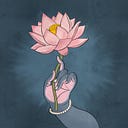Watercolors by William Simpson
William Simpson (1823–1899) was commissioned to go to India by his employers, Day and Sons, the London lithography firm. Simpson arrived in Kolkata in 1859 and travelled widely. His rapid pencil drawings formed the preparatory studies for his finished watercolours which were done after his return to London in 1862. His fond memories of India, as noted in his journal, resulted in these highly coloured, evocative and romantic interpretations of the Indian landscape.
The Kailāsanātha temple was breathtaking to all who saw it. The immense scale of the architecture, and the skill required to carve it out of the rocky mountainside, was almost incomprehensible, and the angle from which Simpson has drawn this view highlights this fact. The couple standing in the foreground offers a sense of scale to the temple.
Pencil, pen and ink and watercolour on paper
William Simpson, 1861
The great stupa of Sanchi is the finest example of monumental architecture of the Shunga era (c.185–75 BC). It consists of a large hemispherical dome which was built over an already existing stupa ascribed to the 3rd century BC from the time of the Buddhist emperor Ashoka Maurya (reigned c.269–232 BC). The stupa was later enlarged around the 1st century BC under the Shungas and four elaborately carved gateways or toranas were added at the cardinal points.
Benares, 1864
The picture is suffused with the yellow glow of lamps in the gathering dusk;a woman is pictured leaning to light a lamp in a little niche at a street corner. Diwali, the Festival of Light, was marked ceremonially by the lighting of many such earthen lamps — diyas — all over India. The festival extended for five days during the lunar month of Kārtika.
